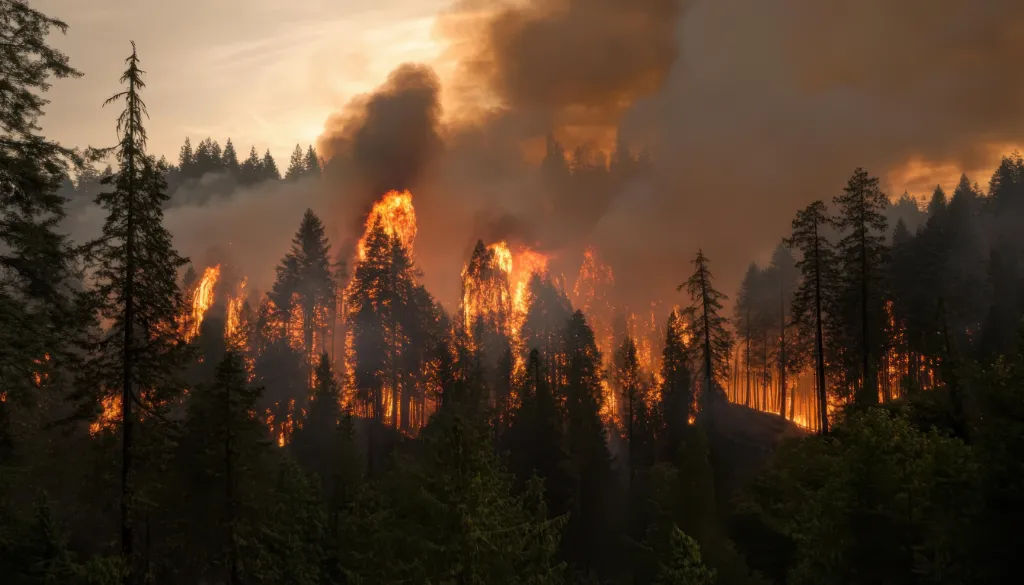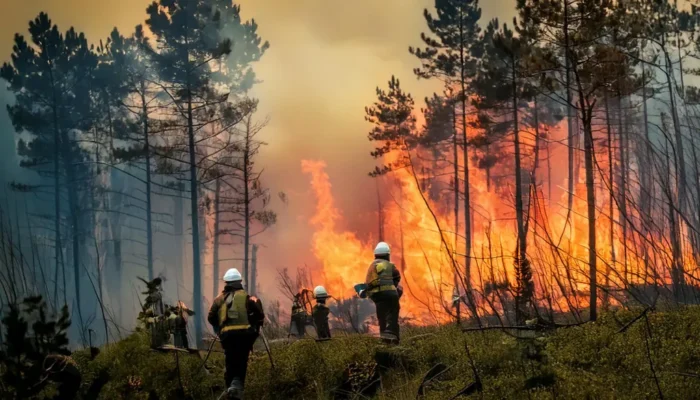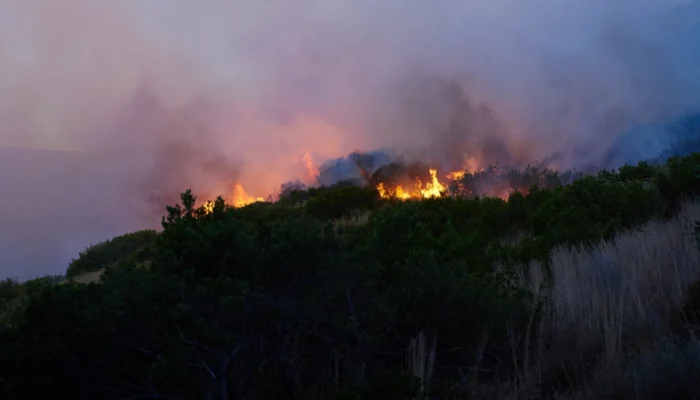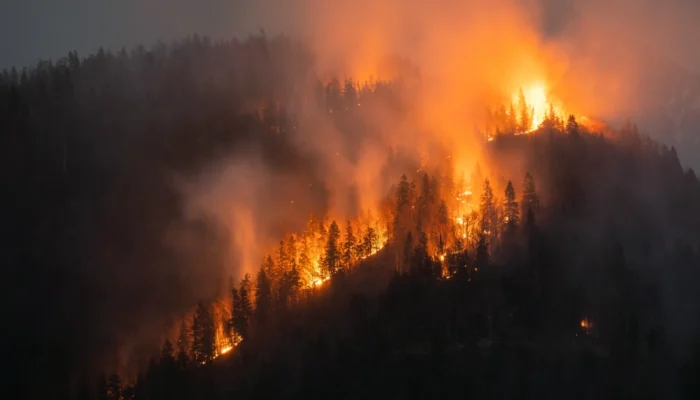Wildfires are dangerous, fast-moving events that can cause destruction across forests, grasslands, and even entire communities. As wildfire seasons become longer and more intense, it’s more important than ever for people to understand what really causes these fires and how they behave. However, many wildfire myths continue to spread, causing confusion and putting people at greater risk. In this article, we’ll take a closer look at some of the most common wildfire myths and explain the truth behind them using facts from science, fire safety experts, and trusted resources like What Is a Wildfire?
.
Table of Contents
ToggleMyth 1 – Wildfires Only Happen in Hot, Dry Places
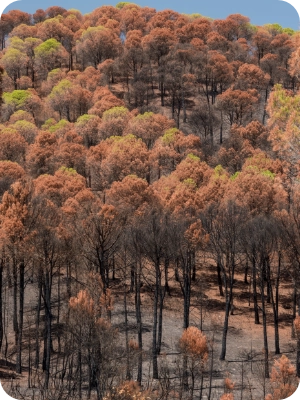
A lot of people think wildfires only start in places that are very hot and dry, like old dry forest or during heatwaves, but this is not always true. While heat and dryness do make fires more likely, wildfires can happen almost anywhere if the right conditions are present. Even places with cooler or wetter climates can experience fires, especially when there’s a long period without rain, high winds, or a buildup of dry vegetation on the ground.
In fact, wildfires have occurred in areas like the Pacific Northwest and even parts of the northeastern U.S. after dry seasons. According to the National Interagency Fire Center, more than 58,000 wildfires occurred in the United States in 2023, burning over 2.6 million acres in both traditional and non-traditional wildfire regions. Fire doesn’t just need heat—it needs fuel and the right weather, and those conditions can exist almost anywhere.
To understand more about how fires move beyond just dry areas and why heat alone isn’t the only factor, you can read The Science of Fire Spread: Heat Transfer Explained for a deeper look at the role of convection, radiation, and conduction in wildfire behavior.
.
Myth 2 – You Can Outrun a Wildfire
Some people believe they can drive or even run away from a wildfire if they see it coming, but this is a very dangerous misunderstanding. Wildfires can move extremely fast, especially when strong winds are pushing the flames forward or when the terrain allows the fire to spread quickly.
Under the right conditions, a wildfire can travel faster than 14 miles per hour in grasslands and up to 6 miles per hour in forests, which is faster than most people can run. In mountainous or hilly areas, fires spread even faster uphill—flames can move four times faster going uphill compared to flat ground, because heat rises and dries out vegetation ahead of the fire. This is why emergency officials always advise people to evacuate early. Waiting even a few minutes too long can make a huge difference when fire is spreading quickly through a dry, windy area.
.
Myth 3 – Wildfires Can’t Cross Roads or Rivers
It might seem like roads, rivers, or other big open areas could stop a wildfire, but unfortunately, this is not the case. Wildfires produce something called embers—small, glowing pieces of burning material that can be carried by the wind for long distances. These embers can fly over rivers, highways, or even firebreaks and start new fires far ahead of the main blaze.
This is called spotting, and in windy conditions, embers can travel more than a mile from the fire front. In the 2018 Camp Fire in California, spotting caused flames to leap across multiple fire barriers and helped the fire spread rapidly through the town of Paradise. The presence of dry leaves, pine needles, and flammable structures makes it easy for embers to start new fires, even in places thought to be safe.
.
Myth 4 – Wildfires Are Always Bad for Nature
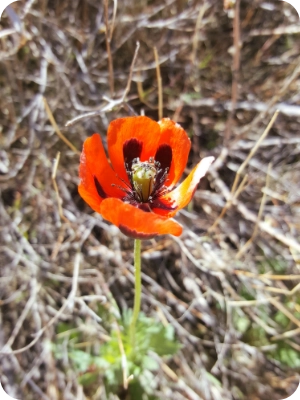
It’s easy to think that all wildfires are harmful to the environment, especially when you see images of burned trees and smoke-filled skies, but the truth is more complicated. In many ecosystems, fire plays a helpful and natural role. Some plants and trees have even adapted to need fire to grow, release seeds, or stay healthy.
For example, the lodgepole pine, which grows in the western United States, has cones that only open after being exposed to high heat, which means fire helps these trees reproduce. Fire also clears away dead wood and underbrush, which can fuel much more dangerous fires if left untouched. The U.S. Forest Service and National Park Service often use prescribed burns for exactly this reason—to reduce wildfire risk and keep ecosystems balanced. Fires that burn at low or moderate intensity can improve biodiversity by making space for new plant growth.
To see one inspiring example of nature’s recovery, read Wildfire Flowers: Resilient Blooms Rising from the Ashes, which shows how certain flowers only appear after fire and thrive in scorched soil.
.
Myth 5 – If My House Isn’t in a Forest, I’m Safe
One of the most common wildfire myths is that you’re only at risk if you live deep in the forest. In reality, wildfires often reach areas where homes and wildlands meet, which is called the wildland-urban interface. Many people live in these areas without realizing how close they are to fire risk.
According to FEMA, more than 46 million homes in the United States are located in wildland-urban interface zones. Fires can spread into neighborhoods through embers that land on roofs, in dry yards, or near wooden decks and fences. In fact, in many recent wildfires, homes burned down not because the flames reached them directly, but because embers ignited something flammable nearby. That’s why it’s important to create defensible space by clearing leaves from gutters, trimming branches near roofs, and removing dead vegetation close to the home—even if you live in a suburb or outside the forest.
.
Myth 6 – Firefighting Aircraft Put Out Fires on Their Own

Movies and news videos often show airplanes and helicopters dropping water or red fire retardant on fires, and this can give people the wrong idea that air support is enough to stop a wildfire. While firefighting aircraft are extremely helpful, they do not put out wildfires by themselves. Their main job is to slow the fire down so that ground crews can safely get close enough to put out the flames and create fire lines.
According to the U.S. Forest Service, air tankers and helicopters are support tools—not solutions. They drop fire retardant to reduce heat and slow the spread, but the fire isn’t fully extinguished until ground crews use tools like hoses, bulldozers, and hand tools to dig firebreaks and remove hot spots. When terrain or weather conditions are too dangerous for ground crews, the fire can often burn uncontrolled, even with aircraft working above it. That’s why fires often last days or even weeks, despite all the technology we have today.
.
Conclusion
Wildfires are powerful and unpredictable, and the more we understand about them, the better prepared we can be. Believing in wildfire myths can lead to poor decisions and put lives and homes in danger. By learning the facts and listening to experts, we can protect ourselves, our communities, and the environment.
If you want to make sure you’re ready to act when a fire threatens your area, check out Wildfire Evacuation: What to Do When It’s Time to Go for step-by-step guidance that could save your life.
Always stay informed, share accurate information, and help stop the spread of wildfire myths before they cause more harm.
